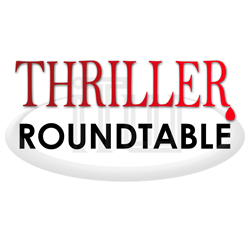

March 14th to 20th: “Is setting just a backdrop, or a key element to your story?”
 We talk so much about character and conflict. What about setting? Is it just a backdrop? Or a key element to your story? You don’t want to miss next week’s Roundtable as ITW members D.E. Johnson, Karen Dionne, William Dietrich, Peter James, Bobbye Terry and Norb Vonnegut lead this thrilling discussion!
We talk so much about character and conflict. What about setting? Is it just a backdrop? Or a key element to your story? You don’t want to miss next week’s Roundtable as ITW members D.E. Johnson, Karen Dionne, William Dietrich, Peter James, Bobbye Terry and Norb Vonnegut lead this thrilling discussion!
~~~~~
D.E. (Dan) Johnson‘s literary debut, a historical mystery entitled The Detroit Electric Scheme, was published by St. Martin ‘s Minotaur in September 2010. The sequel, Motor City Shakedown, will be published by Minotaur in September 2011. Dan is a history buff who has been writing fiction since childhood, but had to hit his midlife crisis to realize he should get serious about it.
Detroit native Karen Dionne is the internationally published author of two environmental thrillers, Freezing Point and Boiling Point. She serves on the International Thriller Writers board of directors as Vice President, Technology, and is co-founder of the online writers community Backspace, where she organizes the Backspace Writers Conferences held every May in New York City. Karen is also a member of Sisters in Crime and the Mystery Writers of America.
William Dietrich is the author of thirteen books that have sold into 31 languages, including the Ethan Gage series of historical thrillers. He is a Pulitzer-winning journalist, college professor, and avid traveler.
Peter James is an International best-selling crime thriller novelist published in 34 languages. In addition to early work as Orson Welles’ char, James’ vast experience includes success in TV and film production, as well as over 20 novels. His latest, DEAD MAN’S GRIP, is the seventh in his Detective Superintendent Roy Grace crime series and arrives in late May 2011.
Norb Vonnegut writes financial thrillers and non-fiction commentary (The Huffington Post, Acrimoney) about Wall Street behind closed doors. He has appeared on Bloomberg, Judith Regan, and the Laura Ingraham shows. Top Producer, his debut novel, was a featured pick on Today and one of Smart Money’s seven must-read books for the fall of 2009. His follow-up thriller, The Gods of Greenwich, takes place in the high-rolling world of hedge funds and will be released on April 26, 2011.
Pat Mullan’s recent work has appeared in the anthology, DUBLIN NOIR, published in the USA by Akashic Books and in Ireland and the UK by Brandon Books. You can find his GALWAY NOIR anthology on-line from iPulp Fiction. His latest novel, Last Days of the Tiger, is now available from Athry House Books. New thrillers coming soon: Creatures of Habit and Screwed. He is Ireland Chair of International Thriller Writers, Inc.
Bobbye Terry is the multi-published writer of romantic comedy, suspense and fantasy. She also writes under the pseudonym Daryn Cross and with a co-writer as Terry Campbell and has books out or slated for publication through Black Opal Books, Crescent Moon Press, Eternal Press, L&L Dreamspell and Turquoise Morning Press. Buried in Briny Bay, her first mystery novella in a series of four, released on March 7. Her next cozy, Slam Sisters of Serendipity by Terry Cambell, is slated for publication by Eternal Press in June She is a regular writer for Writers Fun Zone and The Mojito Literary Society and is a member of ITW, RWA, FF&P, Yellow Rose and DARA chapters, Crimespace, and Savvy Authors. For more information, check out her online headquarters.
- LAST GIRL MISSING with K.L. Murphy - July 25, 2024
- CHILD OF DUST with Yigal Zur - July 25, 2024
- THE RAVENWOOD CONSPIRACY with Michael Siverling - July 19, 2024
